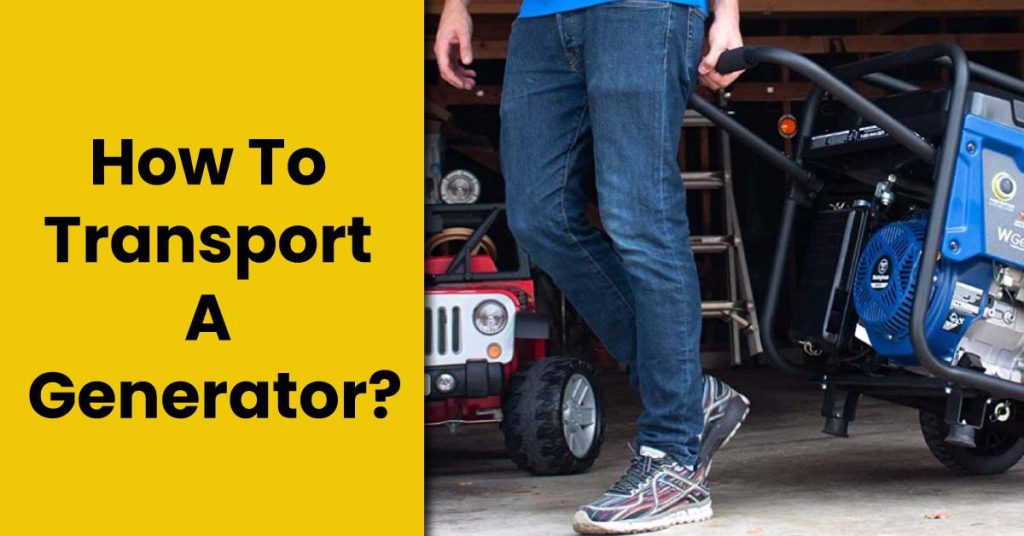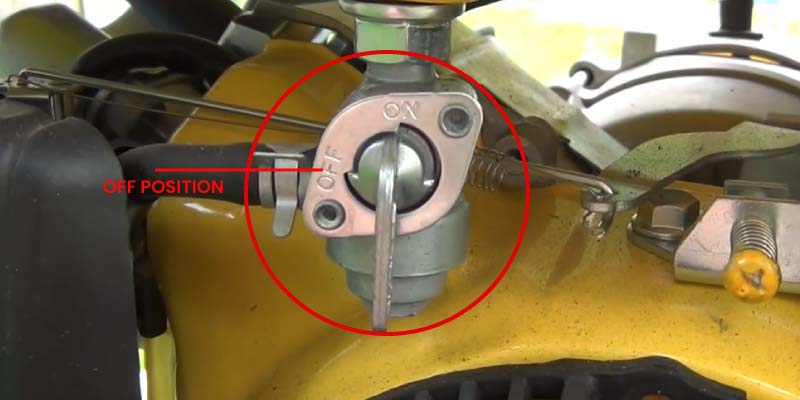How To Transport A Generator? – Safely Transport Your Genset
For heading towards the wilderness of camping, you don’t need to leave the comfort of your home behind anymore. Having a generator by your side, you can easily open numerous possibilities from lights to the stoves. Anyhow, for transporting a generator a few precautionary measures are important to be taken. Such precautions will prevent your generator from getting any damage and will also make sure that enough fuel is reaching its destination.
Transporting a generator requires great attention and care. Though portable generators are built to be moved, there are some more rugged in design than others that still need to be secured for the trip.
In this article, we will describe the process and ways by which you can easily transport a generator.
How To Safely Transport A Generator?

As you might have invested in portable generators to enjoy power at work or for recreational activities, it is important to consider transporting a generator to its particular destination with great care.
The following steps are involved in guiding about how to transport a generator:
Prepare For Transit:
Before loading up your generator, make sure that it is ready to move. If you have recently run your generator then it will be good to give it twenty minutes to cool down before making any movement.
Shut Off the Fuel Valve:

Make sure to turn the fuel valve off always before transporting your generator. The vibrations on road can cause fuel to get inside the crankcase.
Note: Turning the fuel valve off is a very good idea whenever the engine is not running to prevent possible leaks inside the crankcase. For better results, allow your generator to cool down before transporting it. As it is obvious, the engine will be hot after running.
So, it is recommended to turn it off and wait for at least 15 minutes before moving it to keep you safe from burns and also protect the components of your generator from any kind of damage.
Keep the Generator Upright:
It is not recommended to turn a generator on its side in order to transport it. Turning a generator on its side can lead to fuel or oil leakage that will ultimately damage its other parts. Also, use a vehicle that can easily accommodate the moving parts of your generator in its upright position. For transporting it properly, you should use trailers or trucks.
Note: Never put a generator inside the car. As fumes from fuel tank can prove very dangerous to your health and also to the passengers.
Transporting:
When loading a generator onto the trailer or securing it to the bed of the truck, you have to be very careful. In both ways, you will need to cover it properly in order to protect it from damage.
Keep it in an upright position and then secure it with the help of bungee cords or tie-down straps for preventing it from moving during transport.
You will need to lock the wheels to prevent the generator from rolling around.
Also, avoid setting anything on the generator.
Keep the speed of the vehicle balanced by not braking very hard during the journey as the generator may fall over your trailer or truck bed.
Storing & Moving Fuel:
Different fuels can be required by generators such as gas, propane, or diesel. Each of these types of fuel is a highly volatile liquid that should be handled with proper care. To prevent fumes from leeching out, you will need to secure the caps on the container as well as any ventilation.
It is also suggested to label the container in an appropriate way by mentioning hazardous material stickers on it with the aid of bungee cords or truck boxes so it won’t shift or tip over during transport. If the container is small enough to adjust inside the vehicle, then sitting inside that closed compartment will expose you to hazardous fumes.
If you want to drain out the fuel here is the guide to do it safely.
How To Transport An RV Portable Generator?
Most of the RV generators are permanently mounted on the compartment for safety measures. But you will need to check fasteners regularly before traveling to make sure that screws and bolts are tight. If you already have a separate portable generator for RV, try to follow all steps mentioned for transport.
If there is the possibility of securing your generator in tow of the vehicle or RV compartment then do it. If it is not possible then it will be wise enough to follow all safety precautions while moving your generator.
How To Transport A Worksite Generator?
Generators should always be secured permanently on a trailer or truck bed. It will help in protecting them during traveling to and from the work sites. If there is no permanent possible application of it, then follow the enlisted steps.
Recommendations:
There are the following recommendations you should keep in mind to ensure safety:
Frequently Asked Questions – FAQs
Is it possible to transport a generator in a car?
Never put your generator in a moving car. Gasoline smells can easily overcome you, even if the tank is empty. Your generator should be transported in the bed of a pickup truck or on a trailer. Portable generators can weigh up to 250 pounds, which is significantly more than most cars are capable of securely transporting.
Is it safe to drive a pickup truck with a generator in the back?
It should not be run in the bed since it gets too hot. In the rain or while wet, you should not run it “uncovered.” If the electronic inverter is wet, it will be damaged. The generator’s ground connection is not for connecting to the ground.

Josh is a highly skilled electrician with specialized expertise in the field of generators. With years of experience under his belt, he has established himself as an expert in all aspects of generators, ranging from installation and maintenance to troubleshooting and repairs. Josh’s in-depth knowledge of electrical systems and his commitment to staying updated with the latest industry advancements make him a reliable and sought-after professional.
